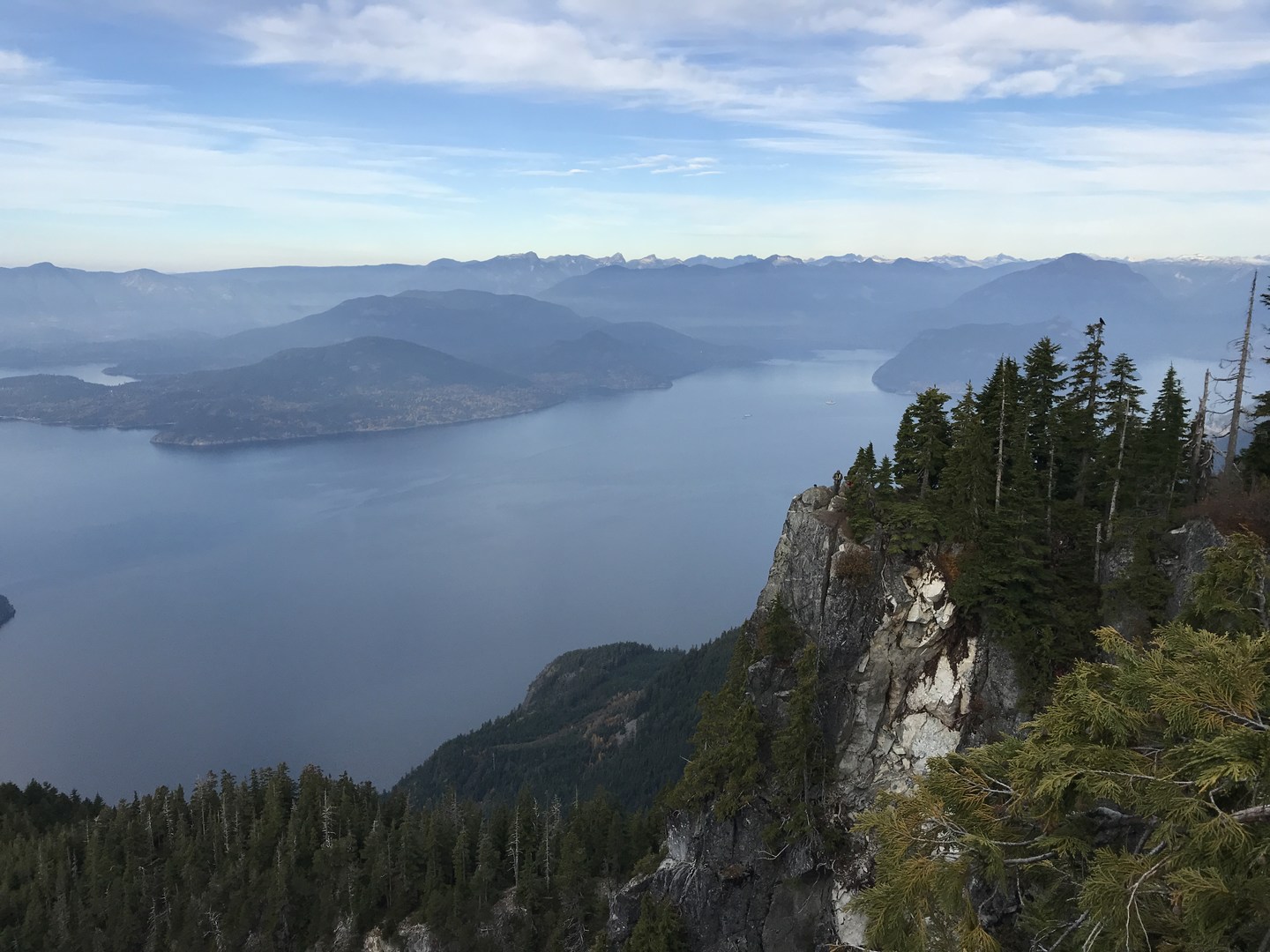You are here
In recent years, the first major viewpoint on the Howe Sound Crest Trail, known as Saint Marks Summit, has become a hugely popular destination. The views are spectacular and have played really well on social media, so the trail quickly became an iconic local spot. Since then most of the trail has been widened, making access even easier. It's incredibly popular on a weekend day in summer. Normally it's snow free by the first or second week of July, but check the BC Parks website for trail reports. You can normally get a good sense of the snow at altitude by looking at Grouse or the Lions from town. It's generally hikable until mid-November when snowshoes and some avalanche precautions become necessary.
The trail begins by parking at the Cypress Ski Resort. There is a big billboard, and there are signs right at the gate. This is the most confusing section of the hike thanks to the warren of signs and trails in the area. Taking either the Saint Marks Trail or the Howe Sound Crest Trail west and north will get you to the same place. The more southern, treed start that wanders past the marshes is much prettier.
The trails meet on a service road of gravel and ambles along past a power station. Just beyond this the gravel trail climbs steeply, switchbacking. The alders make for a less interesting walk than the old-growth forest you just left, but you quickly find yourself once more in them. The trail forks (again, check the signs here) and heads downhill, wandering across the flanks of Mount Strachan.
Eventually a trail follows a broad wooded col and veers off of Mount Strachan. If you're here when there is snow, be warned because this is the most risky part of the hike for avalanches (see bellow). The trail evens out pleasantly before you encounter the seemingly endless switchbacks. These end abruptly, and from here it's a narrower trail that wanders steeply at first through greenery before arriving at Saint Marks.
The descent is back the way you came.
Winter and spring travel
Ideally having AST 1 courses, tranceivers, and a shovel and probe is recommended for crossing terrain this steep in winter. Most people do not bother with this, but accidents have happened, and it's always good to be prepared. MEC offers rentals for $10 a day if you need anything.
In terms of risk, the main issue is crossing Strachan. In particular there is one slope near where the trail moves off Mount Strachan. It's a big wide open slope. Historically this area has seen avalanches, and there have been smaller incidents further back along the trail. The best strategy is:
- Check the forecast on Avalanche.ca. If treeline rating is high, consider what risks not having gear and training will expose you too.
- Move a decent distance apart, ideally a minimum of 6 meters. At the wide open area, cross one at a time.
- Be sure not to go late in the day, especially in spring. Snow starts to move when it gets warmed up. Try and be back across the big slope before 3 p.m. at the very latest.
What to bring
- Many folks underestimate the time and distance this hike requires. In the hot summers, 1.5 liters of water is a good minimum. Extra food, layers, and rain jackets are good because bad weather can sweep from up the valley surprisingly quickly, even on bluebird days. I would also strongly recommend a headlamp. The casual appearence the trail has in local media means you're guaranteed to see folks with their smartphone lights on walking out past dark. Lastly, a map and compass is recommended. This trail is straightforward, but this is a great chance to become more comfortable with reading and understanding topo maps. Also, there is no signal for most of the way, so unless you use something like Gaia GPS apps and have predownloaded the correct segment, you may get hooped.
- The trail is mostly not that steep. Unless it's very rainy, even proper hiking boots aren't really that necessary.
- Trekking poles are nice to have for the hard-pounding descent on the switchback, but they aren't essential.
- Technically speaking camping is allowed in Cypress Provincial Park provided you are well away from the resort. But this is a very precarious privileged. In recent years, frequent fires during bans, trash, and damage to the fragile alpine plants has put this under threat.
- If you are camping in the area, please be a steward to these places, and reach out to others to be the same.
- You can basically camp anywhere, but be warned. The bugs are awful closest to the trail near the ponds. Going about 1 kilometer further along the trail and along small trails is well worth it. There are a few smaller clearings, but it is tough to get even two-person tents into most places. There is capacity for 10 tents at most here, so it's easy to see why so much damage has been done when it's not uncommon to see more than 20 tents on a busy summer weekend.
Logistics + Planning
Current Weather: Powered by Dark Sky
























Comments
Sign In and share them.